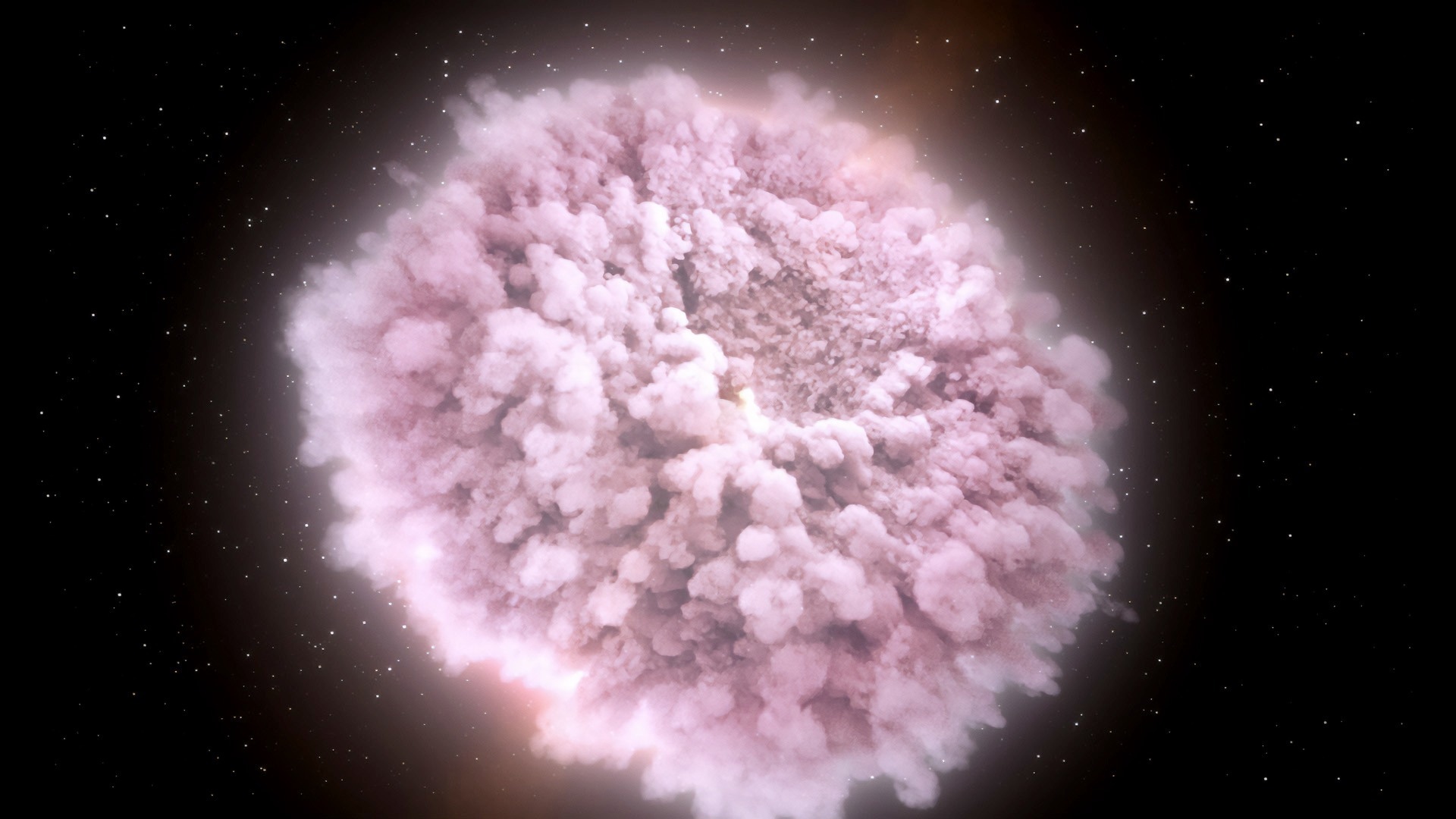Feb 19 2024
One strategy to lessen reliance on fossil fuels is nuclear power. However, one of the concerns with nuclear power is the handling of radioactive waste.

Simulation of neutron star collision. Detections of gravitational waves from merging neutron stars tipped off researchers here on Earth that it should be possible to predict how neutrons interact with atomic nuclei. Image Credit: NASA's Goddard Space Flight Center/CI Lab CC-BY-ND, University of Tokyo.
Although it is not yet feasible to convert radioactive waste products into more stable elements on a large scale, it is a possibility. Researchers at the University of Tokyo have developed a new technique that can be used to measure, forecast, and model a crucial step in the process of stabilizing radioactive waste more precisely.
This could lead to new theories regarding the origins of some heavier elements in the universe as well as better nuclear waste treatment facilities.
Given that the atomic bomb and the Fukushima accident were two of the most significant events in Japan's recent history, it makes sense that the word “nuclear” might set off alarm bells for some individuals.
However, nuclear power is seen as an essential component of the endeavor to decarbonize the energy sector, given the relative lack of suitable space in Japan for renewable energy sources like solar or wind.
As a result, scientists are working very hard to enhance nuclear power's efficiency, safety, and other aspects. Associate Professor Nobuaki Imai of the University of Tokyo's Center for Nuclear Study and associates believe they can help improve waste processing, a crucial component of nuclear power.
Broadly speaking, nuclear power works by boiling water using self-sustaining nuclear decay reactions. Unstable elements break apart and decay, releasing heat, which boils water, driving turbines. But this process eventually leaves behind unusable waste that is still radioactive. This waste can remain radioactive for hundreds of thousands of years, so it is usually buried deep underground. But there is a growing desire to explore another way, a way in which unstable radioactive waste can be made more stable, avoiding its radioactive decay and rendering it far safer to deal with. It’s called transmutation.
Nobuaki Imai, Associate Professor, Center for Nuclear Study, University of Tokyo
Transmutation is the reverse of nuclear decay in that an unstable element can become slightly heavier by adding a neutron, thereby preventing the element from disintegrating and emitting radiation.
This new form may be sufficiently stable to be regarded as safe, depending on the original substance. However, while this process has been widely understood for some time, it has proven difficult to quantify with enough accuracy to advance the concept and, ideally, create prototypes for next-generation waste management facilities.
The idea actually came from a surprising source: colliding stars, specifically neutron stars. Following recent observations of gravitational waves emanating from neutron star mergers, researchers have been able to better understand the ways neutrons interact and their ability to modify other elements.
Nobuaki Imai, Associate Professor, Center for Nuclear Study, University of Tokyo
Nobuaki Imai adds, “Based on this, we used a range of instruments to narrow our focus on how the element selenium, a common nuclear waste product, behaves when bombarded by neutrons. Our technique allows us to predict how materials absorb neutrons and undergo transmutation. This knowledge can contribute to designs for nuclear waste transmutation facilities.”
Researchers find it challenging to make these kinds of observations; in fact, they are unable to witness acts of transmutation firsthand. Instead, the group can determine how much of a sample does not transmute by observing how much of it does. They can then precisely estimate how much of the sample did transmute by taking readings to confirm that transmutation occurred.
Nobuaki Imai adds, “We are confident that our measurements accurately reflect the real rate of transmutation of unstable selenium into a more stable form. We are now planning to measure this for other nuclear waste products. Hopefully, this knowledge will combine with other areas required to realize nuclear waste treatment facilities, and we might see these in the coming decades.”
Though our aims are to improve nuclear safety, I find it interesting that there is a bidirectional relationship between this research and astrophysics. We were inspired by colliding neutron stars, and our research can impact how astrophysicists look for signs of nuclear synthesis, the creation of elements in stars, to better understand how elements heavier than iron were made, including those essential for life.
Nobuaki Imai, Associate Professor, Center for Nuclear Study, University of Tokyo
Journal Reference:
Imai, N. et al. (2024) Neutron capture reaction cross-section of Se through the Se (d,p) reaction in inverse kinematics. Science Direct. doi.org/10.1016/j.physletb.2024.138470.